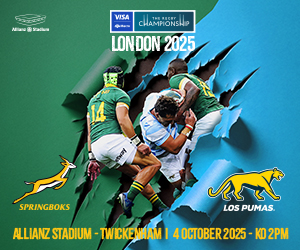
For many years, the bond between a professional sports team and its supporters has been a vital part of the professional sports industry. But in today’s digital world, going to games or watching broadcasts is no longer sufficient to keep the fans engaged. Gamification comes to the fore here, meaning the introduction of gaming aspects in order to reach out to the audiences in a more interactive way. Professional sports organizations are also utilizing their know-how in technology and psychology by creating new experiences that enhance their relationship with fans. In this article, we will examine how gamification is altering the methods of interacting with fans differently than before.
The Rise of Gamification in Sports
Gamification tends to be seen as tools introduced to enhance audience engagement, boost revenue, and even increase fan loyalty, all while remaining strategic and fun. Fantasy leagues, mobile apps, and rewarding digital systems are some of the royalties built to enthrall the audience, and it seems to be working. A good example is the bookmaker MelBet. It offers excellent bonuses for both new and regular users. What is more interesting is that there is a promo code store where you can choose a promo code for points earned in the process of betting or playing casino games.
Technology has taken the world by storm, and with everyone nowadays carrying smartphones in their palms, teams are given the ability to communicate with their target audience directly. Encouraging audience engagement, mobile applications allow the fans to participate by predicting the next moves, answering trivia questions, or simply bearing points in exchange for participation. Alongside this, stadiums are now expanding their horizons by bringing AR games into the picture, allowing fans to engage and interact with the environment around them in real-time. The coming together of the digital and physical means that even home fans will stay engaged.
In addition to the above, competition between sports organizations is another contributing factor. With endless entertainment options, sports teams must constantly battle hard and think outside the box to capture and retain a fan’s attention. What better way to do that than brand differentiation through gamification, offering the fans more than interesting gameplay?
Benefits of Gamification in Fan Engagement
The dynamics of how teams engage with their fan base are undergoing a paradigm shift thanks to gamification and its associated aspects. The following are four major facets that are accelerating its growth:
- Improved Fan Engagement: Multiplayer augmented reality games and live quizzes are some of the gamified experiences that increase fan engagement since the content cannot be passively consumed.
- Boosted Commitment: Teams strengthen fans’ emotional connection to them, so they repeatedly want to engage by playing and receiving rewards in the form of exclusive offers or points.
- Data Collection: Marketing strategies are enhanced when toned-down gamified resources provide helpful information about the behavior of their audience.
- Increase in Revenue: New sources of income will come from sales of additional in-game content, sponsorships, partnerships, and someday even tournaments of such types of events.
Such benefits explain why, in the modern world of sports, gamification is increasingly viewed as an indispensable tool.
Real-World Examples of Gamification in Sports
The influence that gamification has created can be observed in various professional sports organizations. Let’s delve deeper into their cases through the table below:
| Organization | Gamified Element | Objective | Outcome |
| NBA | NBA All-Star Voting App | Boost fan participation | Millions of votes cast annually |
| NFL | Fantasy Football Leagues | Engage fans during the season | Increased viewership and retention |
| Manchester United | AR Treasure Hunts | Drive stadium attendance | Enhanced matchday experiences |
| MLB | Ballpark App Rewards Program | Incentivize in-game purchases | Increased concession and merch sales |
These examples highlight how gamification is being implemented in a variety of innovative approaches, ranging from increasing attendance to enhancing income generation.
Deepening Connections with Fans
The use of gamification in relation to sports includes the principles of human nature, such as rewards, competition, and socialization, to create stronger ties with the fans. An example is loyalty programs. The fans are awarded points when they attend matches, like or share content on social networks, or make a purchase. Points are then accumulated and exchanged for exclusive opportunities such as meet-and-greets or limited merch items.
Another practice often used by teams to retain fans in fantasy leagues. In these platforms, users can become managers of a team by selecting who they want to join their squad and attempting to outdo their friends. This additional facet of the sport allows fans to take charge and motivates them to follow the sport even in the off-season.
Social media is also a great influencer. Gamified features such as hashtag challenges to fans, contests, and prediction polls provide fans an opportunity to engage online with their trusted brands, boosting their online interaction and helping in community building. Such two-way communication between fans and teams helps keep the fans more emotionally attached.
Challenges in Implementing Gamification
Gamification is quite helpful but has some drawbacks. The most prominent is building adventures that are fun and engaging, which is quite costly both in terms of tech and design. The apps and AR tools also have to be easy to use if they are to engage the fans properly.
Another issue is data privacy. The use of fan behavior data has to be targeted to provide value, and so has to be adequately protected. Organizations should be able to exercise GDPR-like constraints and transparency in how data is used.
Overgamification is also a concern, as the games and rewards might become deleterious. If the gamified aspects appear artificial, the fans will be disenchanted with the offerings. There has to be an equilibrium between sophisticated and simple.
Future Trends in Sports Gamification
The universe of gamification in sports is colorful and has a lot of potential. Below are four trends that are most likely to influence the industry in the future:
- Integration with Virtual Reality (VR): Completely immersive experiences where customers can feel like they are in the game.
- Blockchain-Based Rewards: Safe and easy-to-trace digital instruments like NFTs when it comes to loyalty programs.
- AI-Enhanced Engagement: Personalization of gamified experiences aimed at individual fans.
- Esports Crossover: The fusion of regular sports and competitive gaming to appeal to a younger audience.
Given the fact that these trends are dynamic, the opportunity for enhanced engagement with fans will be ever-positive.
Gamification’s Impact on Revenue Streams
Gamification increases the overall experience of a fan and increases the overall revenue of the business as well. Teams can sell their applications by sponsoring businesses and implementing in-app purchases. For example, a local business shop can sponsor questions on a quiz app and mold them into an advertisement.
Gamified events such as treasure hunts or trivia with brand sponsorships also drive revenues. This type of partnership enables the brands to go beyond simple advertisements and seek connection with fans, facilitating brand visibility and the team at the same time.
In addition, gamification also boosts sales of merchandise and tickets. Teams provide fans with discount coupons or special access as a way to promote sales that would not have otherwise happened in the first place. Such a direct cause-and-effect relationship between engagement and revenue highlights the significance of gamified strategies.
Building Long-Term Fan Loyalty
Gamification is recognized as a long-term strategy not only to engage individuals but also to build up loyalty in them. Those people who consider themselves rewarded for investing their time during the participation of a team are more likely to stay loyal to that team. This loyalty is not just limited to games but extends across merchandise purchases, social media activity, and local participation.
Additionally, children especially, as they are exposed to technology through gamification, are the most appealing demographic to attract to gamification. By appealing to these fans at an early age, they will turn into devoted fans for many decades. Such a perspective is a good guarantee for the preservation of fans in the new world of entertainment reality.
Wrapping Up: Gamification’s Role in the Future of Sports
There is a shift in how fans interact with professional sports through gamification. Augmented reality experiences and fantasy leagues are not only boosting the business’ revenues but are also helping cement fans’ connections to sports. As technology continues progressing, it is guaranteed that the scope of gamification will extend, which will ensure that sports are always entertaining. The time for enhanced fan engagement has arrived, and it has arrived in the form of gaming.


United Rugby Championship
Vaea Fifita’s commanding presence has Scarlets pushing for URC play-off spot

British and Irish Lions
British and Irish Lions Watch: Caelan Doris confirmed to miss the tour with injury



















You must be logged in to post a comment Login